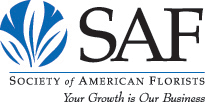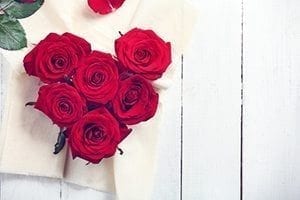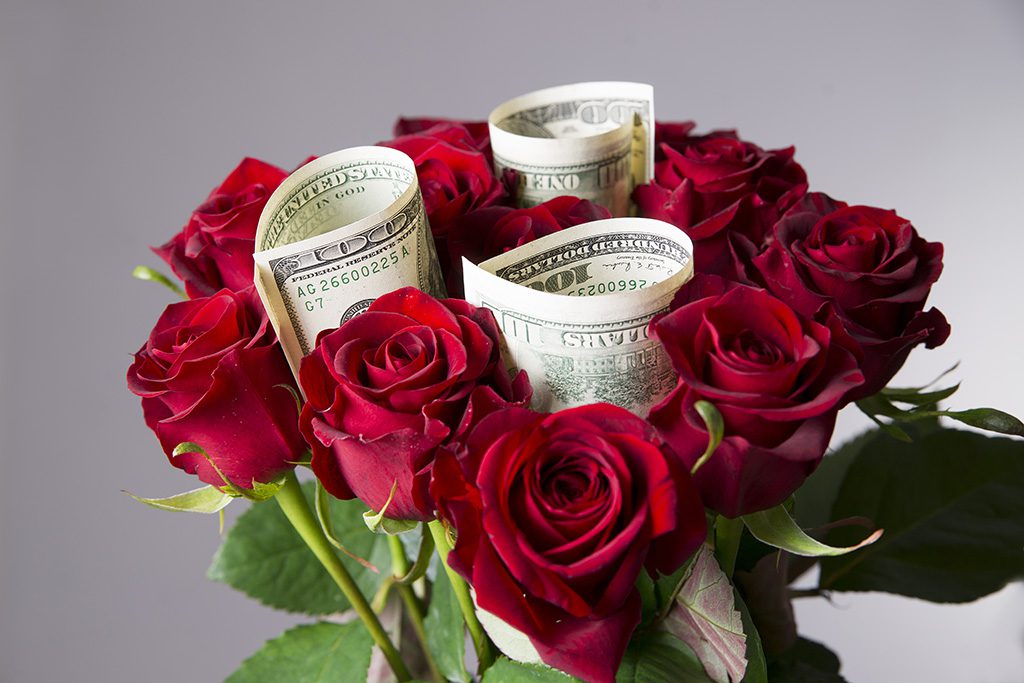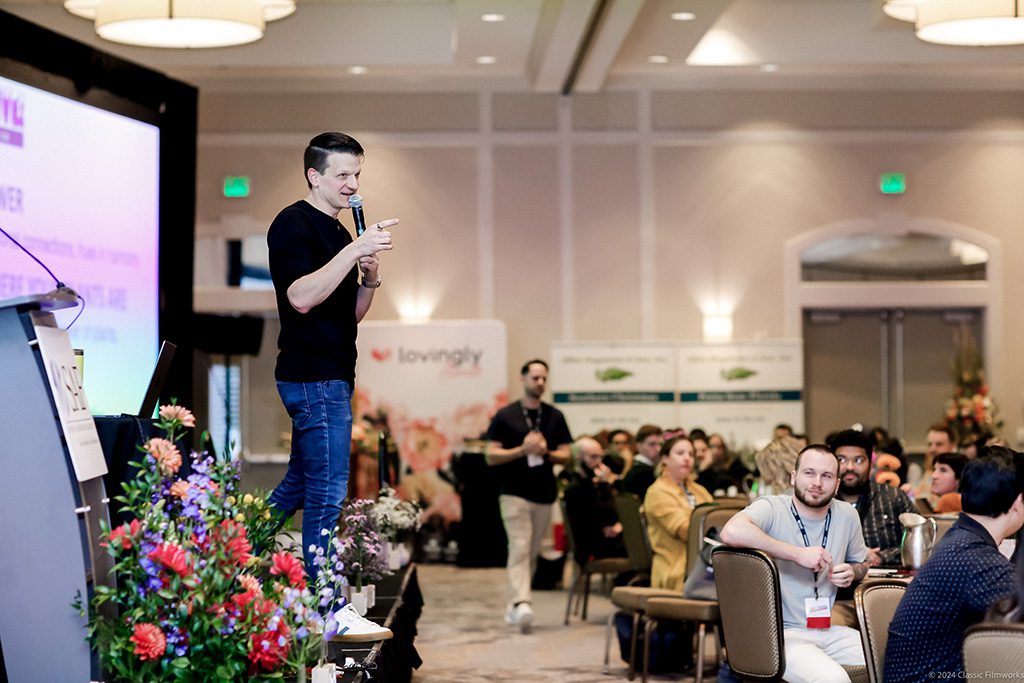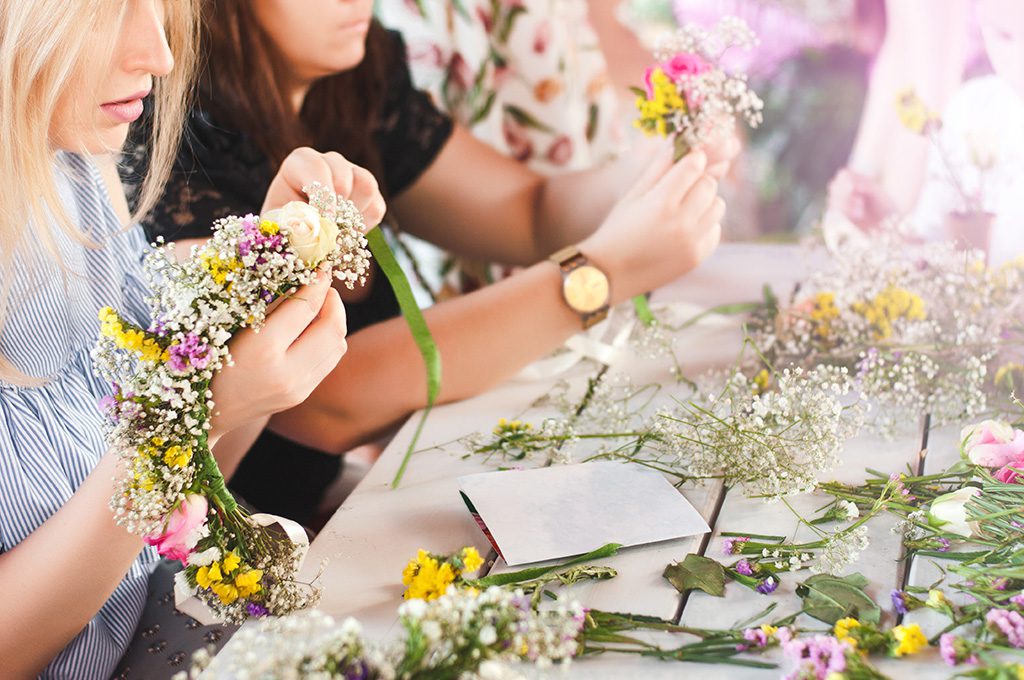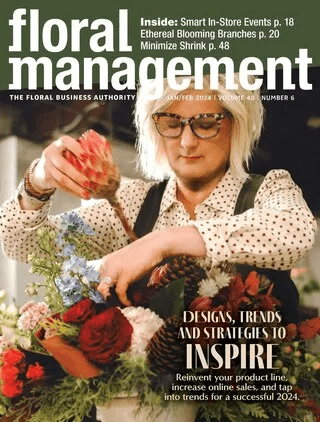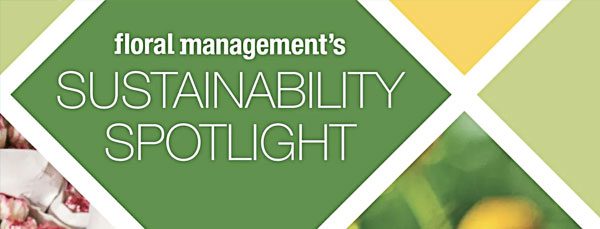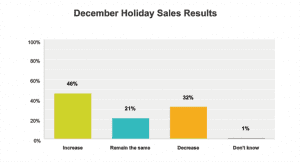
Source: December Holiday Sales and 2017 Valentine’s Intentions Survey. Emailed Jan. 2. 8.7 percent response rate.
The December holidays brought sweet returns to many florists. According to a Society of American Florists post-holiday survey, 46 percent of respondents said 2016 holiday sales increased. About 21 percent said they were the same and roughly 32 percent said they decreased.
The average transaction was $67, exactly the same as last year.
In write-in responses, respondents suggested the election of Donald Trump as both a reason for sales increases (“customers feel things are going to be better with a new administration”) and drop-offs (the “unsettling political climate”), but they also noted the effect of more routine challenges: good/bad weather, increased/decreased competition from other florists, mass marketers and non-floral vendors, and the value of wire-in orders, among other factors.
Breaking down respondents by size and location, businesses in the middle range of annual sales ($300,00 to $499,999) and those in urban and small town locations appear slightly more likely to have seen a sales increase, compared to the overall average response.
Among businesses with annual sales of:
- $300,000 or less. 41 percent increase; 26 percent flat; 31 percent decrease.
- $300,000 to $499,999. 48 percent increase, 22 percent flat; 31 percent decrease.
- $500,000 to $999,9999. 46 percent increase; 15 percent flat; 39 percent decrease.
- $1 million or more: 44 percent increase; 18 percent flat; 38 percent decrease
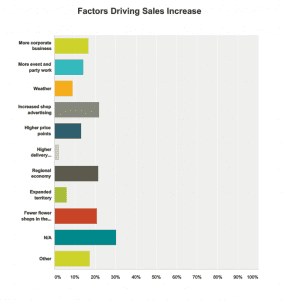
Source: December Holiday Sales and 2017 Valentine’s Intentions Survey. Emailed Jan. 2. 8.7 percent response rate.
Among businesses that described their location as:
Urban. 49 percent increase; 15 percent flat; 36 percent decrease
Suburban. 41 percent increase; 24 percent flat; 35 percent decrease
Small town. 47 percent increase; 20 percent flat; 32 percent decrease
Rural. 45 percent increase; 27 percent flat; 27 percent decreas
Reasons for a Bump
Respondents who saw increases in sales credited increased shop advertising and promotion (22 percent); the regional economy (21 percent); fewer flower shops in the area (21 percent); more corporate business (17 percent); more event and party work (14 percent); higher price points (13 percent); weather (9 percent); expanded and new territory (6 percent) and higher delivery charges (2 percent).
Among those who experienced an increase in sales, many said the bump was minor: About 24 percent said the uptick was between 1 and 5 percent. About 21 percent said it was 6 to 10 percent. Roughly 7 percent classified it as 11 to 15 percent, another 7 percent said 16 to 20 percent and an additional 7 percent said sales rose by 21 percent or more. (The remaining respondents were unsure of the exact increase or said the question was not applicable.)
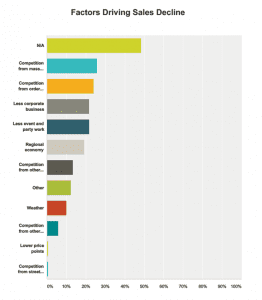
Source: December Holiday Sales and 2017 Valentine’s Intentions Survey. Emailed Jan. 2. 8.7 percent response rate.
About 47 percent of respondents saw an increase in website sales and 45 percent noted an uptick in walk-in sales. About 44 percent said phone sales were up and 18 percent noted an increase in wire-in orders, while 13 percent saw gains in giftware sales and 8 percent saw higher sales in wire-out orders
In write-in responses, respondents credited the timing of Christmas (over the weekend) along with internal changes such as better staff training, more or varied gift and add-on options, updates to websites and healthy wire-in orders, along with non-holiday work such as sympathy designs
The election also factored into people’s calculations.
“People in the area had just come off of election news and had a renewed faith in small business,” wrote a florist in North Carolina.
In Florida, another respondent described it as a “new mood.”
“Customers feel things are going to be better with a new administration that sound like forward-thinking leaders,” he wrote.
Factors Behind Declines
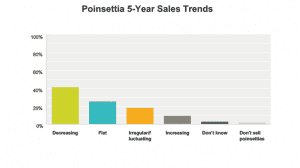
Source: December Holiday Sales and 2017 Valentine’s Intentions Survey. Emailed Jan. 2. 8.7 percent response rate.
Respondents who saw a decline blamed competition from mass marketers/supermarkets (26 percent); competition from order-gatherers (24 percent); less corporate business (22 percent); less event and party work (22 percent); the regional economy (19 percent); competition from non-floral vendors (13 percent); the weather (9 percent); competition from other florists (6 percent); lower price points (1 percent) and competition from street vendors (1 percent).
Among those who saw a decline, about 16 percent said the drop was between 1 and 5 percent and 15 percent said it was in the 6- to 10-percent range. About 7 percent said the falloff was from 11 to 15 percent and 5 percent said they saw a decline of 16 to 20 percent. About 6 percent said sales dropped by 21 percent or more. (The remaining respondents were unsure of the exact decrease or said the question was not applicable.)
About 44 percent saw a drop in wire-in sales and 38 percent saw a decrease in walk-in sales. Roughly 33 percent said wire-out sales were down and 30 percent reported a drop-off in phone sales. About 20 percent said website sales declined and 16 percent said giftware sales dipped.
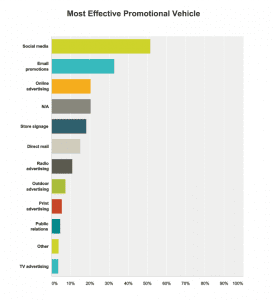
Source: December Holiday Sales and 2017 Valentine’s Intentions Survey. Emailed Jan. 2. 8.7 percent response rate.
Respondents who saw decreased sales pointed to undervalued wire orders, fewer sympathy and everyday orders, competition not only from traditional sources but also companies such as Amazon, along with the timing of the holiday (coupled with a late Thanksgiving) and trouble finding reliable workers. The election came up again among these respondents.
“I don’t know why [sales declined], perhaps the unsettling political climate,” suggested a florist in Maryland.
In New York, another florist pinned it on the “sense of unknowing about the future — the election!”
Poinsettia Sales
Forty percent of respondents said poinsettia sales were down this year. About 38 percent said they were about on par with last year and about 20 percent said they were up.
Among those who experienced an increase in poinsettia sales, nearly a quarter said their gains were between 1 and 5 percent. Among those who saw a decline, about 19 percent said poinsettia sales dropped 6 to 10 percent (another 15 percent said the drop-off was between 1 and 5 percent.) The vast majority (89 percent) said red poinsettias constituted 21 percent or more of their poinsettia sales.
About 41 percent of respondents said poinsettia sales have been decreasing over the past five years. About a quarter classified sales as flat in that period and nearly 19 percent called them “irregular or fluctuating.” About 9 percent said sales have been increasing in the area.
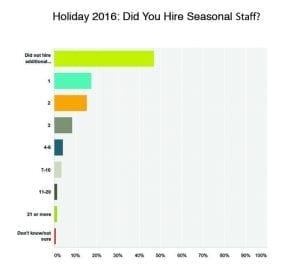
Source: December Holiday Sales and 2017 Valentine’s Intentions Survey. Emailed Jan. 2. 8.7 percent response rate.
Marketing and Promotions
About 54 percent of respondents promoted the December holidays at the same level as they had in 2015. About 31 percent increased efforts and 8 percent reduced them.
Popular methods for holiday promotions included social media (81 percent); store signage, posters or display (66 percent); email promotions (59 percent); online advertising (45 percent); print advertising (40 percent); direct mail (28 percent); outdoor advertising (27 percent); radio advertising (26 percent); PR and media interviews (13 percent); TV advertising (6 percent).
More than half of respondents (51 percent) called social media the most effective promotional vehicle for achieving holiday goals. About 33 percent named email promotions. Twenty percent said online advertising.
About 22 percent of florists said 1 to 5 percent of December sales came through their website. Another 22 percent pegged that number at 6 to 10 percent and 20 percent said it was 11 to 15 percent. About 17 percent credited their website with 21 percent or more of December sales — 14 percent said it helped generate 16 to 20 percent.
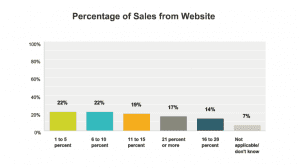
Source: December Holiday Sales and 2017 Valentine’s Intentions Survey. Emailed Jan. 2. 8.7 percent response rate.
Open Houses, Décor, Hours and Staffing
Sixty percent of respondents did not host an open house. Ninety-eight of respondents were closed all day on Christmas Day; 96 percent were closed all day on New Year’s Day.
About 49 percent of respondents offered holiday décor services. Among those who did, 54 percent said that segment was flat, while 30 percent saw an increase.
Sixty-two percent of respondents were open for part of the day on Christmas Eve Day (27 percent were open all day and the rest were closed). Nearly 50 percent of respondents were open part of the day on New Year’s Eve Day while 32 percent were open all day and 19 percent were closed.
Forty-seven percent of respondents did not hire additional staff. About 17 percent brought in one extra person and 15 percent brought in two people.
About half of respondents ran an after Christmas sale — an idea that had at least one Michigan florist tsk-tsking.
“December 1, we started [buy-one-get-one deals] for ornaments and décor,” he wrote. “On the 15th, we started 50 percent off. All our holiday is down and boxed…cleaning and setting stores for Valentine’s and spring. We don’t want perception of a discount store after holidays.”
